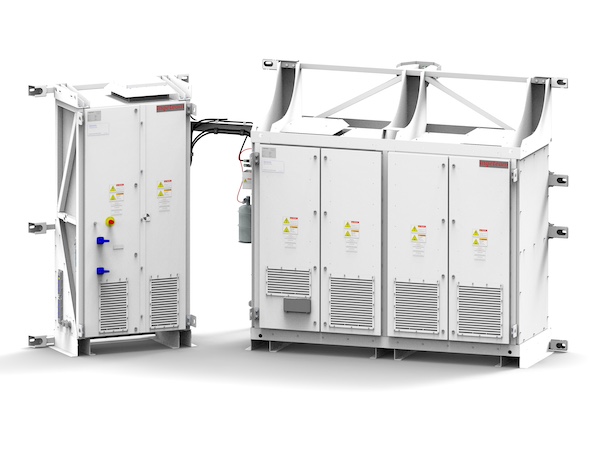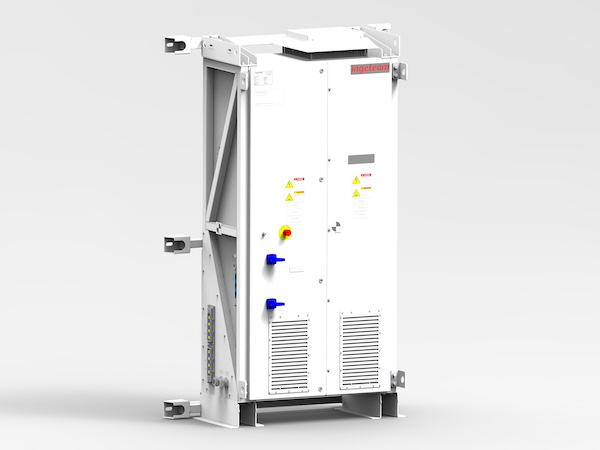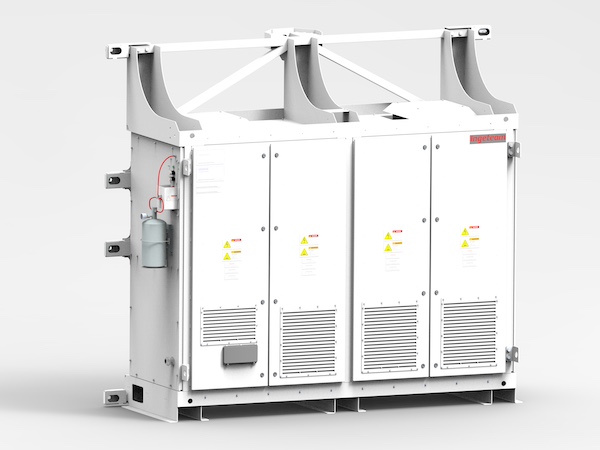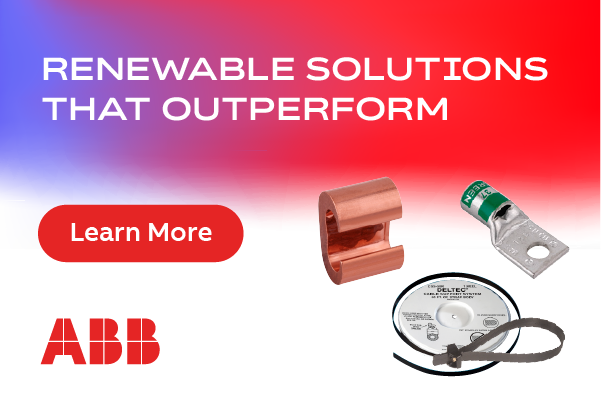Safeguarding Wind Against Power Outages
The unprecedented twin challenges of ensuring secure and affordable energy supplies and meeting climate targets have propelled wind power development into an extraordinary new phase of ever-faster growth. After a challenging year, the global wind market is ready to bounce back in 2024. Experts predict that 680 GW of new capacity will be added in the next five years.
Also, the increasing demand for renewable energy has resulted in manufacturers increasing the wind turbine dimensions and capacity, which implies the installation of increasingly larger blades and towers that are significantly more sensitive to adverse weather conditions — posing a greater risk for major component damage. Stresses can be reduced by aligning the rotor to track the incoming wind. During extreme weather conditions, power outages can happen suddenly.
In this regard, the existing power backup solutions are based on a generator with a reciprocating engine (genset). Although the genset machine is capable of starting autonomously and supplying hard loads for a long time, it starts working a few seconds after a failure, exposing the system to costly damage. Summarizing, this technology presents low efficiency, as well as low commitment to sustainability.
In this context, battery-based yaw backup system products are a sustainable solution which ensures an instant response in hazardous weather conditions to reduce the mechanical stresses of the wind turbine through fast feeding of the yaw system, thus keeping the components safe and avoiding financial losses. Furthermore, the battery-based yaw backup system also provides an emergency electric power source to support essential loads such as control, communications, and thermal, among other systems.
The battery-based yaw backup system’s technology is based on an electrical storage system which is capable of reacting immediately in the hardest conditions of voltage drops, as well as adapting its operation to demanded energy. The system comprises a power conversion system (PCS) and a unique battery energy storage system (BESS).
This innovative technology provides the power required to control the yaw systems, protecting the structural integrity of the wind turbine during a power failure. This helps the wind sector overcome challenges in terms of security, sustainability, and efficiency.
Benefits at a glance
- Improves wind turbine performance in hostile conditions.
- Ensures a safe and reliable operation.
- Reduces maintenance costs and longer plant life, resulting in productivity growth.
- Enables early profits through the high Return on Investment.
- Prevents great damages on wind turbines and other assets resulting in serious consequences for the energy sector and financial losses.
- Avoids the use of diesel generators, except as a last resort in emergency situations.
- Contributes to the massive penetration of wind energy into the grid to enable the clean energy transition.
- Offers real-time operation monitoring and control, including alarm event captures.
System overview
Battery-based yaw backup system products are designed to ensure power supply in case of grid losses. The system is a key element for safeguarding the reliability and availability of wind turbine farms, specifically the yaw system and other single-phase critical loads that constitute each wind turbine. These products are adapted to the standards of each country or the application requirements.

Figure 1: Yaw Backup System (YBS)
Battery-based yaw backup system products are characterized by their great capability to be customizable, allowing configuration according to the desired power converter topology and load type.
The power converter systems are configured using a unique conversion line that works as both a rectifier and an inverter. Alternatively, they can include a back-to-back converter to connect the DC bus at any voltage and frequency input.
On the other hand, they can also incorporate a DC/DC converter to improve the battery operating voltage, and thus overcome battery voltage limitations.
Regarding the output configuration, they are capable of supplying three-phase loads (3p and 3p+N). Additionally, they can incorporate single-phase loads (1p+N).
The systems use advanced modulation techniques to synthesize any type of voltage or current waveform to the output, leveraging the fast-switching speed of the IGBTs controlled by the converter control unit.
.jpeg)
Figure 3: Yaw Backup System (YBS) architecture
Power conversion system
The main objective of the power conversion system (PCS) is to transform the continuous energy of the batteries into alternating current to supply the system loads. It is materialized as a cabinet which is composed of a Power Stack in charge of adapting the energy, a harmonic filter to improve the signal quality, protections against short-circuits and over-voltages, and a general control device (CCU). Furthermore, it is configured to respect demanded grid codes and keep the batteries healthy in a good term.

Figure 4: Power Conversion System (PCS) cabinet
Energy storage system (ESS)
The energy storage system (ESS) is in charge of basic tasks of battery control and maintainability to guarantee the health and efficiency of the storage system. The battery cells are assembled with LFP technology (lithium iron phosphate), which is characterized for its high energy density. This type of cell provides great durability in the long term. Besides, the device has a compact design for easy future upgrades thanks to its form factor and cell dimensions.

Figure 5: Energy Storage System (ESS) cabinet
The architecture of the ESS control is divided into three levels. The most basic module in the structure is the BMS, which is connected to each battery — there will be as many BMS units as the number of batteries. Subsequently, all BMS units are governed by a power distribution unit (PDU) which is responsible for obtaining voltage and temperature measurements, among other tasks.
At the highest level of the hierarchy is the battery administration unit (BAU), which acts as a gateway between PCS and ESS. In this connection, the BAU manages the sending and receiving of data with the PDU, as well as being responsible for the main connection between the CCU and the BAU.
Alberto Barcia is Global Commercial Director for Converters & Controls at Ingeteam, a team made up of more than 4,500 people present in 21 countries, who believe that there is a better way of generating, transporting, storing, and consuming energy more efficiently and sustainably.
Ingeteam | www.ingeteam.com
Author: Alberto Barcia
Volume: 2024 May/June








